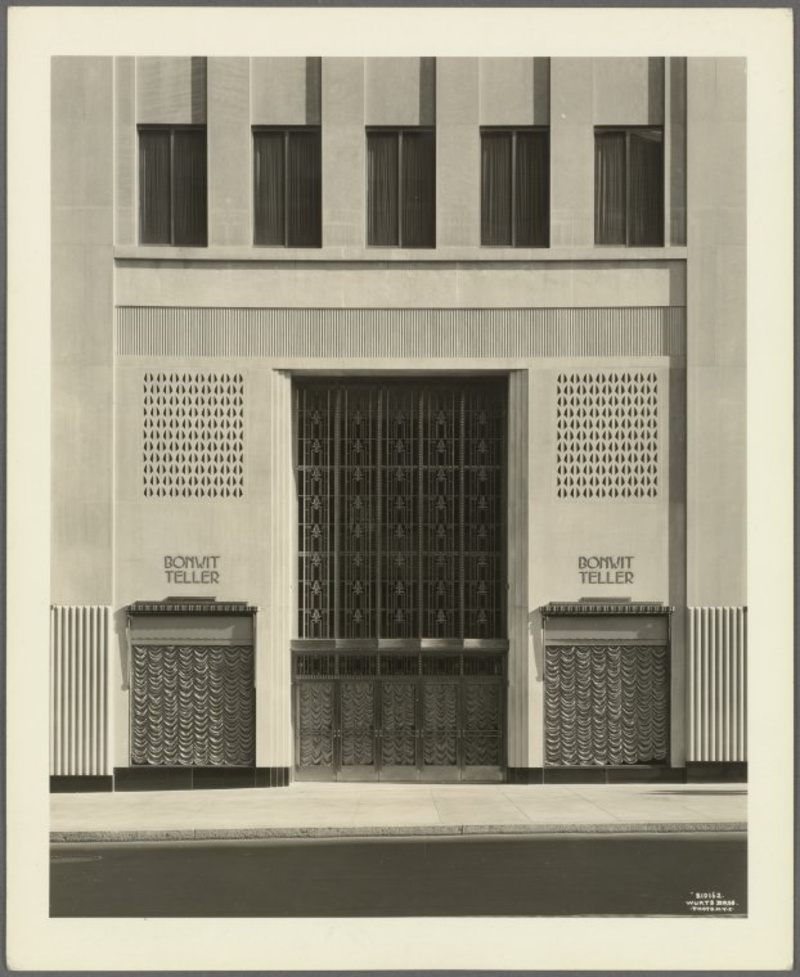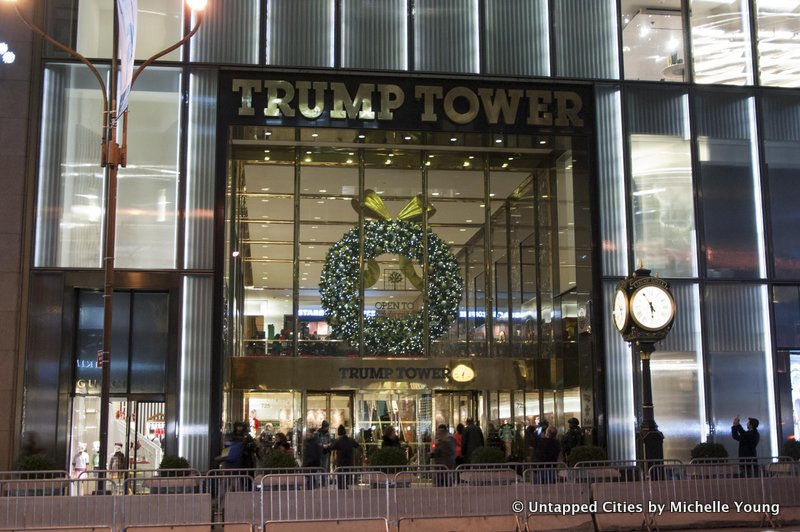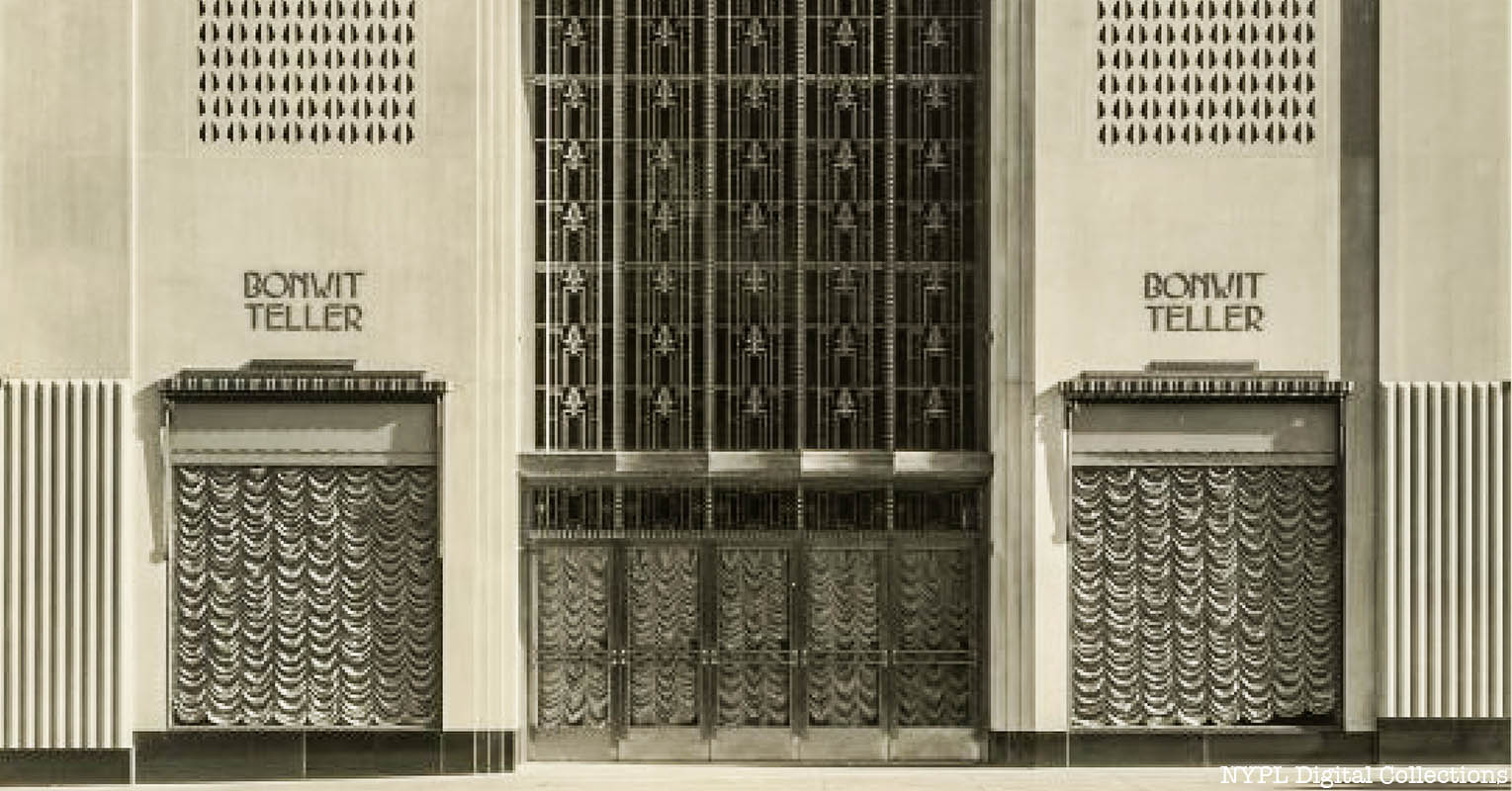Over the years, countless department stores have come and gone from the New York City shopping scene. One that met a rather tragic demise more than four decades ago is Bonwit Teller & Company, a lost landmark from a bygone era where sophisticated stores dominated Fifth Avenue.
Throughout the early 1880s, the German-American businessman Paul Bonwit operated a small millinery store at Sixth Avenue and 18th Street in Manhattan’s Ladies Mile, a prime shopping district during the late 19th century which ran roughly from 15th to 24th Streets and Park Avenue South to west of the Avenue of the Americas. With the profits garnered from the millinery, Bonwit opened another store in 1895 at Sixth Avenue and 18th Street, considered to be the first iteration of what would eventually become Bonwit Teller. After the store failed, Bonwit proceeded to buy out his current partner and joined with Edmund D. Teller in 1898 to open another store, this time at 23rd Street between Fifth and Sixth Avenues.

In 1907 the firm was officially incorporated as Bonwit Teller & Co., before relocating once again in 1911 to 38th Street. From here, the company became known for specializing in high-end women’s apparel during a time period in which most competitors sought to diversify their product lines. As retail trade in New York City began to move uptown, so too did Bonwit Teller, migrating in 1930 into the former M.I. Stewart & Co. Building at 56th Street and Fifth Avenue.
Originally, Stewart & Co. opened in October 1929, just a little over two weeks before the collapse of the stock market. In attendance at the building’s opening was Eleanor Roosevelt, the architect Joseph Urban, and the publisher Frank Crowninshield. Within five months, the company failed and the building was purchased by Bonwit Teller, becoming its flagship store for the proceeding fifty years.
At 12 stories tall, Bonwit & Teller’s flagship store was designed by the traditional Beaux-Arts designers Whitney Warren and Charles Wetmore, the architects behind Grand Central Terminal. Though much of the building’s limestone exterior remained unremarkable, its entrance—made from platinum, bronze, hammered aluminum, orange and yellow faience, and tinted glass—was referred to by American Architect magazine as “a sparkling jewel in keeping with the character of the store.” Inside, murals, decorative paintings, and wood detailing completed the building’s opulent look.
As the 1930s progressed, Bonwit Teller began to operate new branches, opening its first seasonal location in 1935 in Palm Beach. The company later opened its first full-time branch in 1941 in White Plains. By the 1960s, Bonwit Teller had stores in Boston, Chicago, Philadelphia, and Cleveland and in the mid 1980s, additional locations included Kansas City, Buffalo, and Columbia, South Carolina.
Despite the company’s growth nationwide, its flagship store in New York City met its demise in January 1979, after being purchased for $15 million by Donald Trump. Soon after, Bonwit Teller was demolished for the construction of the 58-story Trump Tower residential, office, and retail complex. Initially, architect Der Scutt attempted to persuade Trump to approve a design for the tower that reflected the surrounding dignified district but these requests were denied, with Trump insisting the tower be a bronze-colored glass skyscraper.

Besides Der Scutt, various preservationists urged Trump to save two essential artistic elements: a pair of 15-foot bas-relief sculptures depicting nude women wearing scarves while dancing and a nickel-plated grill on the building’s entryway. Both of these items were subsequently promised to the Metropolitan Museum of Art, so long as the cost to remove them was not expensive.
However, with no prior warning, on June 5, 1980, the sculptures were jackhammered off the building and the grillwork removed, shocking the city’s art community. When asked about the incident, John Baron, a spokesperson with the Trump Organization informed the New York Daily News via telephone that the stones were not worth enough to merit the effort to preserve them—as the process would set the building’s construction timeline back by two weeks. It would later be learned that John Baron was actually Donald Trump in disguise.
Immediately after, board and staff members at the Met expressed outrage at Baron’s comments, with Ashton Hawkins, a Met board member, asking, “Can you imagine the [Met] accepting them if they were not of artistic merit?” To quell the growing public displeasure, Trump released a statement a day after the phone call in which he claimed that the sculptures were reduced to stone due to safety concerns, a risk he was not willing to take. These claims would be refuted by Trump himself later that same year after he told New York Magazine that Bonwit Teller’s art was “worthless” and the “Met didn’t want it.”
Eventually, Bonwit Teller returned to Fifth Avenue, becoming the main retail anchor for Trump Tower. However, this new iteration of the company lacked its previous sophistication that had so readily appealed to the city’s upper-class residents. After filing for bankruptcy in 1989 and being put up for sale, the company moved out of the space a few months later.
To learn more about Bonwit Teller and other lost department stores of New York, join us on May 19th at 12 p.m. for a virtual talk with Chief Experience Officer Justin Rivers. This event is free for Untapped New York Insiders. If you’re not a member, join now (and get your first month free with the code JOINUS).
Next, check out 10 Lost Department Stores In New York City!






